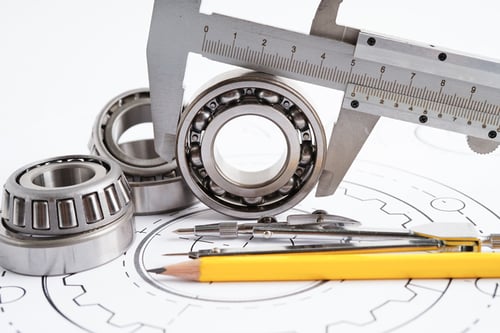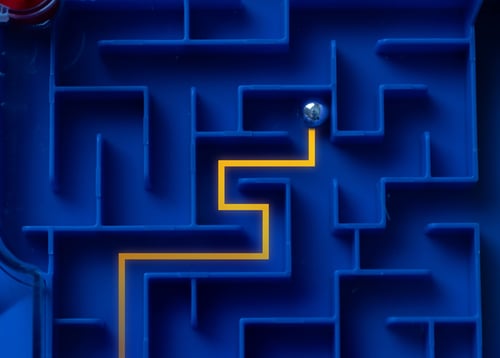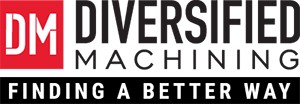Understanding the Role of BOM in Machining with Contract Manufacturers In today’s competitive...
How to Choose a Partner for Contract Design for Manufacturing
Why it Needs to be a Partnership When DFM Design Efforts Are on the Table
It is imperative that you select the right partner when engaging a company to support your design efforts, be it for a new product introduction (NPI) or a (re)design for manufacturability (DFM). We begin by discussing some general points—and be sure to scroll down to the portion where I share some details—and actual scenarios—that you don’t normally hear about. You’ll learn some first-hand intel you’ll want to pay close attention to with regard to the design phase of DFM when partnering with a contract manufacturer.
Overall DFM Considerations
There are overarching considerations to examine for a DFM engagement in general. Exploring these will help you make a more informed decision when selecting a contract partner for DFM, ultimately maximizing the success of your project. We provide a quick list here, and also encourage you to check out our recent blogs that cover different aspects of DFM engagement: prototyping, why to consider DFM, and our comprehensive resource page on design for manufacturability for precision machining contract manufacturing.
When choosing a contract DFM partner, look for and expect:
- Experience and Track Record
- Technical Expertise and Innovation
- Collaborative Approach
- Quality Assurance and Compliance
- Scalability and Flexibility
- Supply Chain Management
- Cost-Effectiveness and Value Proposition
- Communication and Project Management
- Sustainability and Corporate Social Responsibility
- Long-Term Partnership Potential
Focusing Specifically on Design in DFM
Let’s run down some of the considerations that are must-haves when choosing a partner specifically for the design aspects for contract DFM. It’s crucial to consider additional factors to ensure the success of your project.
Creative and Innovative Design Solutions: Look for a partner who demonstrates creativity and innovation in their design approach. They should be capable of generating unique and effective design solutions that optimize manufacturability, functionality, and aesthetics.
Technical Expertise in Design Tools and Software: Assess their proficiency in using design tools and software relevant to your project requirements. A partner with expertise in CAD (Computer-Aided Design) software and other design tools can streamline the design process and ensure accurate documentation for manufacturing.
Prototyping and Iterative Design Process: Evaluate their capability to rapidly prototype and iterate designs based on feedback and testing. A partner who embraces an iterative design process can refine concepts efficiently, leading to better final products and shorter time-to-market.
Understanding of Manufacturing Processes: Ensure that the partner has a deep understanding of various manufacturing processes and their implications on design. They should be able to anticipate manufacturing challenges and design products that are optimized for the chosen manufacturing methods.
Knowledge of Materials and Material Selection: Assess their knowledge of materials and their properties, as well as their ability to select the most suitable materials for your design requirements. The choice of materials can significantly impact the performance, durability, and cost of the final product.
User-Centered Design and Ergonomics: Look for a partner who prioritizes user-centered design principles and considers ergonomics and human factors in their designs. Products that are intuitive, comfortable, and user-friendly are more likely to succeed in the market.
Regulatory Compliance and Standards: Verify that the partner has experience designing products that comply with relevant regulatory requirements and industry standards. Compliance with standards such as ISO, FDA, or CE is essential for market acceptance and legal compliance.
Cross-Disciplinary Collaboration: Consider their ability to collaborate with experts from other disciplines, such as engineering, manufacturing, and marketing. Effective cross-disciplinary collaboration can enrich the design process and result in more holistic and successful product designs.
Design for Sustainability and Environmental Impact: Evaluate their commitment to designing products with sustainability in mind, considering factors such as material recyclability, energy efficiency, and environmental impact. Sustainable design practices are increasingly important for both ethical and market reasons.
Communication and Design Reviews: Assess their communication skills and willingness to engage in design reviews and discussions throughout the project. Transparent communication and regular design reviews ensure alignment with your vision and objectives, leading to better outcomes.
What They Don’t Tell You—and What You Need to Know!
Let’s look under the hood with some insights I’ve gained over many decades in the manufacturing industry.
Capabilities
The selected partner must be evaluated for capabilities that match your design requirements, whether those are within their organization, or through external relationships outside their existing organization. They must also have an interest in providing you the bandwidth you need to support the project based on your timeline. Some of the best shops may have already committed up to the full capacity of their staff capabilities, leaving you with a lack of support and a longer timeline for success. Their business model must also be seeking design work as part of their selling process. Some companies take it on as a “necessary evil” to win business, but do not have a real interest in supporting design.
Integrity
The company you select must also have integrity, since you will be sharing intimate knowledge about your products—things that differentiate you in the market. This information can be protected to a certain degree with a signed confidentiality agreement in advance of sharing any confidential information, but it is also better to deal with a management team that is known in the industry for honesty and integrity. Make sure you have identified this as part of your evaluation process—and dot every “I” and cross each “T” before engaging.
Technology
Since you will be sharing documentation, you should understand your partner’s technological capabilities. Making assumptions that you share similar tech stacks can create stop gaps in your progress as you (try to) share vital information and details. Find out:
- Do they have CAD capabilities?
- How do they share documents?
- Do they have an IT capability if there are communication issues that come up?
Scope of Collaboration
Scope creep, or lack thereof, can limit your progress on so many levels. Here are the questions to ask to ensure you are on the same page with regard to managing expectations:
- What does your partner expect from you as a contribution to the design process?
- Will you be allocating any engineering personnel to the process?
- Will your senior management be involved in the process?
- Have you already done a marketing assessment to understand the needs of your customer when using your products?
All these questions may not be applicable to your project requirements, but if any of them are, make sure you understand the dynamics on both sides of the partnership.
Establish Design Review Process
Before selecting a partner, ask to review their entire design review process to ensure it meets your criteria for success. It should employ an initial review process to identify the needs to support the process. From this review:
- A scope statement should be written to establish the resources needed
- The budgetary cost of providing these resources
- The main deliverables at the completion of the project
- Approximate timeline for completion
There should be a written understanding of how you will communicate with each other, the frequency of the communication, and who should be on the distribution. This entire process should be finalized with a signed contract by both parties.
Legal Due Diligence
Before signing the contract, you should have someone competent (preferably a lawyer) closely review the legal jargon in the contract, since many of the boilerplates significantly favor the contractor and not the customer. These terms are not set in stone, and can also be negotiated to get it right before engaging. Once the contract is signed, the customer loses almost all leverage to renegotiate.
DFM Cases in Point—How it Really Happens
Now that I have outlined the process for selecting a design partner, I want to share two stories with you on how things can go badly for both the customer as well as the design partner.
I have been in the contract manufacturing business for over 40 years, and for most of that time, we enjoyed great success helping customers with design and product launches. There is one case I recall that did not go so well …
Is the Initial Design Flawed?
My customer’s product offering was a mobile cart used in picking products from a warehouse, but also for putting the inventory into a retail environment. The current product offering used lead acid batteries for powering the carts, which contained scanners, printers, and a PC. The customer realized his customers needed a lithium battery solution to provide longer service between charges, and also to reduce weight.
At the time, we provided content for the current product offering, but were not considered for the design support of the new product. Instead, he sought a design house to work with, and they were given total authority to oversee the design process. Since they were a pure design house, they had no production capabilities, so everything in the product development had to be sub-contracted to other partners.
Since they planned to use sub-contractors, we were brought into the design process to help design and build one of the critical components of the system—the charging docks for the batteries, and the battery interface to the carts—essentially where the power is introduced to the carts.
The person from the design house assigned to this project was a degreed engineer, but it seems like his main forte was marketing rather than engineering. All I know is we struggled to get solid technical information to help us in our decision process for supporting this project. We basically followed what appeared to be a comprehensive scope document, and made all our decisions based on those specifications. We built the product in conjunction with a lithium battery partner, and delivered on time and per spec. The unit went out to a test house for verification and compliance testing.
Unfortunately, the unit failed on its first test, and all eyes were on our company for providing a defective design! As it turns out after further testing and evaluation, the specifications within the scope were incorrect, and our unit worked well withing the specs, but not within the application. The issue was that the equipment being powered was not investigated sufficiently, and we found out they had a startup power demand that far exceeded the specification, causing the safety circuitry to shut the system down immediately to avoid a fire.
Bottomline: this caused our customer a delay in the product launch and significant additional costs to redesign and rebuild more prototype units. The design firm was ultimately discharged, and we ended up working directly with the customer to complete the project.
That is a good example of how a customer can do everything right, but still get burned, based on a serious omission in the design process.
Design Partner Burn
The following is an example of how the design partner can also get burned…
As a contract manufacturer, we were very successful supporting design for manufacturability, but at the expense of usually not being the lowest bidder. In one case, we were really trying to engage with a customer, and every time, we were higher priced than one of our competitors. So, I called the potential customer and told him that I was sorry I couldn’t meet that price with the current design, but I could beat the price with a slight redesign—that we would be willing to provide at no cost to them. It turns out their product was actually very poorly designed, which added cost to the raw materials, and also to the assembly labor costs.
The customer agreed to have us support them in a “free” redesign, and we submitted the sample and got the order. The customer was pleased with the results. After completing the first order, we asked for a follow-on order and found out that the customer had given our design to their existing supplier; he had requoted it, beating our price, and had taken the order for the next increment! I called the customer to express my dismay at what transpired, and told him we would no longer help him with redesign. I explained that he will continue to suffer with the “lowest cost on a bad design,” and wished him luck.
The upswing here is that he realized, soon after, that we brought more value to the relationship, and wanted to re-engage—promising not to bid out our re-design again.
Remember what I said about integrity? It works for both parties …
Why Diversified Machining
Designing for manufacturability is crucial for achieving optimal results in precision machining. By applying the principles and strategies outlined here, you will be well-equipped to create designs that are not only functional but also efficient to produce. Remember, collaboration, communication, integrity, and a thorough understanding of machining processes are key to successful DFM implementation or a new product introduction (NPI). Embrace the DFM mindset—we do at Diversified Machining—and you will unlock new possibilities in product development while maintaining cost-effectiveness and high-quality standards.
Good luck with your future design endeavors! We look forward to hearing from you; contact us when you are ready to start your next DFM project.



